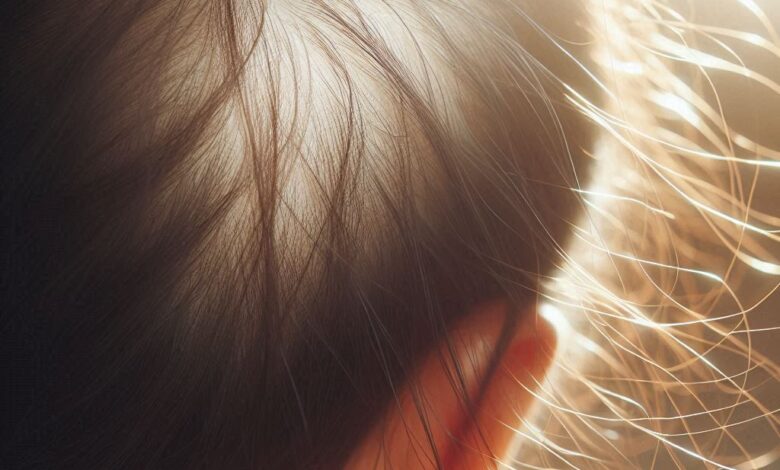Thinning Hair in Women: A Growing Problem

Thinning hair in women can be distressing and is often caused by a variety of factors. Understanding why it happens and exploring potential solutions can help manage and improve the condition effectively.
Causes of Thinning Hair in Women
1. Genetics (Female Pattern Hair Loss):
- Androgenetic Alopecia: Similar to male pattern baldness, this genetic condition causes hair follicles to shrink over time, leading to thinner hair and eventually hair loss.
2. Hormonal Changes:
- Menopause: Fluctuating hormone levels, particularly decreased estrogen and progesterone, can contribute to hair thinning.
- Pregnancy: Hormonal shifts during pregnancy can cause temporary hair loss postpartum.
3. Medical Conditions:
- Thyroid Disorders: Both hypothyroidism and hyperthyroidism can disrupt hair growth cycles.
- Autoimmune Disorders: Conditions like alopecia areata can cause hair loss in patches.
- Nutritional Deficiencies: Lack of essential vitamins and minerals, such as iron or vitamin D, can affect hair health.
4. Lifestyle Factors:
- Stress: Chronic stress can lead to hair shedding and thinning.
- Diet: Poor nutrition or crash diets lacking in essential nutrients can impact hair growth.
- Hair Care Habits: Over-styling, excessive heat, or harsh chemical treatments can damage hair follicles.
Solutions and Treatments
1. Medical Treatments:
- Topical Minoxidil: FDA-approved for female pattern hair loss, minoxidil promotes hair regrowth and thickening.
- Prescription Medications: Finasteride (for post-menopausal women) or spironolactone (for hormonal acne and hair loss) may be prescribed by healthcare providers.
2. Lifestyle Adjustments:
- Nutritious Diet: Eating a balanced diet rich in vitamins, minerals, and proteins supports hair health.
- Stress Management: Practices like yoga, meditation, or therapy can help reduce stress levels.
3. Hair Care Practices:
- Gentle Handling: Avoid tight hairstyles and harsh treatments that can stress hair follicles.
- Scalp Care: Regular scalp massages and using gentle, sulfate-free shampoos can promote healthy hair growth.
4. Cosmetic Solutions:
- Hair Thickeners and Concealers: Products like volumizing shampoos, conditioners, and styling products can temporarily improve hair density and appearance.
- Wigs or Hair Extensions: For severe cases, wigs or hair extensions can provide immediate coverage while waiting for hair regrowth.
5. Professional Interventions:
- Platelet-Rich Plasma (PRP) Therapy: Involves injecting plasma from your blood into the scalp to stimulate hair growth.
- Laser Therapy: Low-level laser therapy (LLLT) devices can promote hair growth and thickness.
Conclusion
Thinning hair in women can stem from various causes, including genetics, hormonal changes, medical conditions, and lifestyle factors. Addressing the underlying cause and implementing appropriate treatments and lifestyle adjustments are crucial steps in managing and potentially reversing hair thinning.
Consulting with a healthcare provider or dermatologist can provide personalized recommendations and treatments tailored to individual needs, helping to restore confidence and promote healthy hair growth over time.
